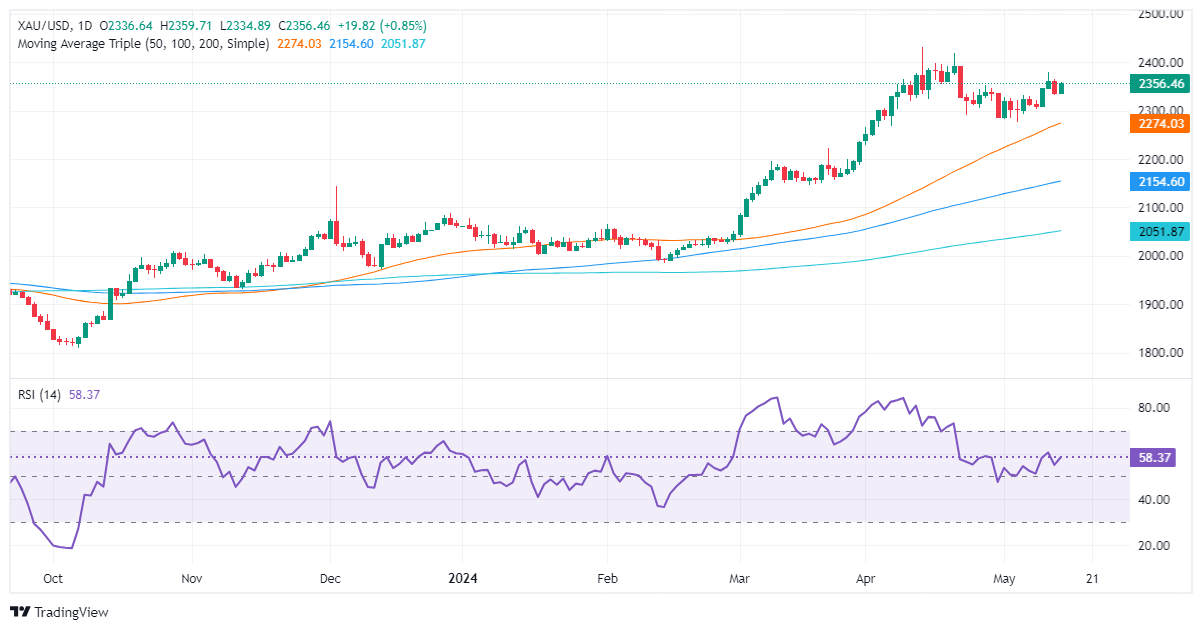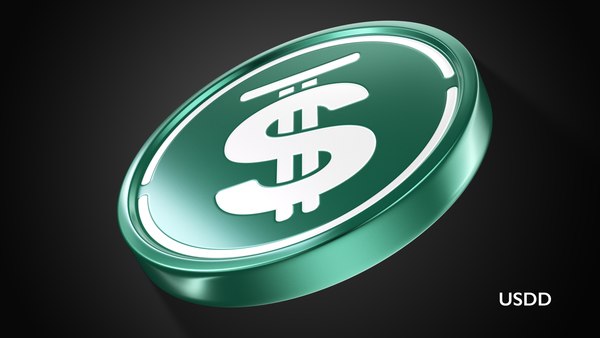- Gold rises 0.97% after US producer price data shows higher than expected inflation.
- Despite the rally, Treasury yields reversed to 4.445%, weakening the Dollar and boosting Gold.
- Powell's waning confidence in disinflation and optimistic GDP outlook of 2% or more fuel Gold's rise.
Gold prices rose beyond $2,359 on Tuesday after data released by the US Department of Labor revealed that factory-gate inflation rose above estimates, a sign that prices remain stable. elevated. Despite this, US Treasury yields are falling, which is a headwind for the Dollar.
The president of the Federal Reserve (Fed), Jerome Powell, made headlines after the publication of the Production Price Index (PPI). He commented that he expects inflation to continue to fall, but was not as confident as before in the prospects for disinflation. He added that the Gross Domestic Product (GDP) is expected to grow by 2% or more due to the strength of the labor market.
XAU/USD is trading at $2.359, up 0.97%. The US Bureau of Labor Statistics (BLS) revealed that prices paid by producers rose above estimates, with only one reading aligned with the consensus of economists. US Treasury yields rose sharply to a daily high of 4.534%, before reversing later.
Daily Market Summary: Gold Shines Ahead of Falling US Treasury Yields and Weak US Dollar
- Gold prices fell amid declining US Treasury yields and the strength of the US Dollar. The 10-year US Treasury note yields 4.451% and is down almost 4 basis points (bps) from its opening level. The US Dollar Index (DXY), which tracks the greenback's performance against six other currencies, fell 0.20% to 105.00.
- The US Bureau of Labor Statistics (BLS) reported that the Producer Price Index (PPI) rose 0.5% monthly, exceeding the forecast for a 0.3% rise. Similarly, the core PPI, which excludes food and energy prices, also rose 0.5%, beating the expected 0.2% increase. Both figures were significantly higher than the 0.1% decline recorded in March in both headline and core inflation, indicating a rebound in production prices.
- The Consumer Price Index (CPI) for April is expected to remain unchanged from the March reading, at 0.4% monthly. The core CPI is expected to resume its downward trend, going from 0.4% in March to 0.3% monthly.
- Other data will be released during the week, led by retail sales for May 15, initial jobless claims and industrial production for May 16.
- On Monday, the New York Federal Reserve released its monthly Survey of Consumer Expectations, which showed inflation expectations for the year rose to 3.3%, up from 3% in March. The data came after the University of Michigan consumer sentiment survey showed one-year inflation expectations rose from 3.2% to 3.5%.
- Expectations for interest rate cuts at the end of the year remain at 35 basis points (bp), according to data provided by the Chicago Board of Trade (CBOT).
Technical Analysis: Gold price surpasses $2,350 and bulls aim for $2,400

Gold's bullish trend extended after posting losses on Monday, however, it remains below the last cycle high of $2,378 seen on May 10. This could keep XAU/USD at the range edge. According to the RSI readings, the momentum is in favor of the bulls.
Therefore, the first resistance for XAU/USD would be the May 10 high at $2,378. If broken, the next technical hurdle would be the psychological mark at $2,400, immediately followed by the April 19 high at $2,417 and the all-time high at $2,431.
Conversely, if sellers were to move and push prices below $2,359, that could sponsor a leg down towards the May 9 low at $2,306, followed by $2,300. Once surpassed, the next stop would be the 50-day SMA at $2,249.
Frequently asked questions about Gold
Why invest in Gold?
Gold has played a fundamental role in human history, as it has been widely used as a store of value and medium of exchange. Today, apart from its brilliance and use for jewelry, the precious metal is considered a safe-haven asset, meaning it is considered a good investment in turbulent times. Gold is also considered a hedge against inflation and currency depreciation, since it does not depend on any specific issuer or government.
Who buys more Gold?
Central banks are the largest holders of Gold. In their aim to support their currencies in turbulent times, central banks tend to diversify their reserves and purchase Gold to improve the perception of strength of the economy and currency. High Gold reserves can be a source of confidence for the solvency of a country. Central banks added 1,136 tons of gold worth about $70 billion to their reserves in 2022, according to data from the World Gold Council. This is the largest annual purchase since records exist. Central banks in emerging economies such as China, India and Türkiye are rapidly increasing their gold reserves.
What correlation does Gold have with other assets?
Gold has an inverse correlation with the US Dollar and US Treasuries, which are the main reserve and safe haven assets. When the Dollar depreciates, the price of Gold tends to rise, allowing investors and central banks to diversify their assets in turbulent times. Gold is also inversely correlated with risk assets. A rally in the stock market tends to weaken the price of Gold, while sell-offs in riskier markets tend to favor the precious metal.
What does the price of Gold depend on?
The price of Gold can move due to a wide range of factors. Geopolitical instability or fear of a deep recession can cause the price of Gold to rise rapidly due to its status as a safe haven asset. As a non-yielding asset, the price of Gold tends to rise when interest rates fall, while rising money prices tend to weigh down the yellow metal. Still, most of the moves depend on how the US Dollar (USD) performs, as the asset is traded in dollars (XAU/USD). A strong Dollar tends to keep the price of Gold in check, while a weaker Dollar is likely to push up Gold prices.
Source: Fx Street
I am Joshua Winder, a senior-level journalist and editor at World Stock Market. I specialize in covering news related to the stock market and economic trends. With more than 8 years of experience in this field, I have become an expert in financial reporting.







